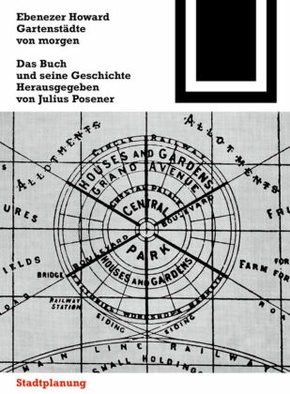Gartenstädte von morgen - Das Buch und seine Geschichte
| Verlag | Birkhäuser Berlin |
| Auflage | 2015 |
| Seiten | 208 |
| Format | 14,1 x 19,2 x 1,1 cm |
| Großformatiges Paperback. Klappenbroschur | |
| Gewicht | 330 g |
| Reihe | Bauwelt Fundamente 21 |
| ISBN-10 | 3035606560 |
| ISBN-13 | 9783035606560 |
| Bestell-Nr | 03560656A |
Ebenezer Howard veröffentlicht 1902 sein Werk Garden Cities of Tomorrow, seine Ideen haben maßgeblich dazu beigetragen, der Bewegung für einen modernen Städtebau Richtung und Ziel zu geben. Sechs Jahrzehnte nach Erscheinen der ersten Ausgabe ergänzte Julius Posener diesen Klassiker der Stadtplanungstheorie um die erstmals 1945 erschienen Essays von Lewis Mumford und Frederic J. Osborn zu einem Streitgespräch der späten sechziger Jahre über die Gestalt der Stadt. Die vorliegende Neuauflage spannt den Bogen ins 21. Jahrhundert und erweitert die Ausgabe von 1968 um ein Vorwort von Carl Fingerhuth.

